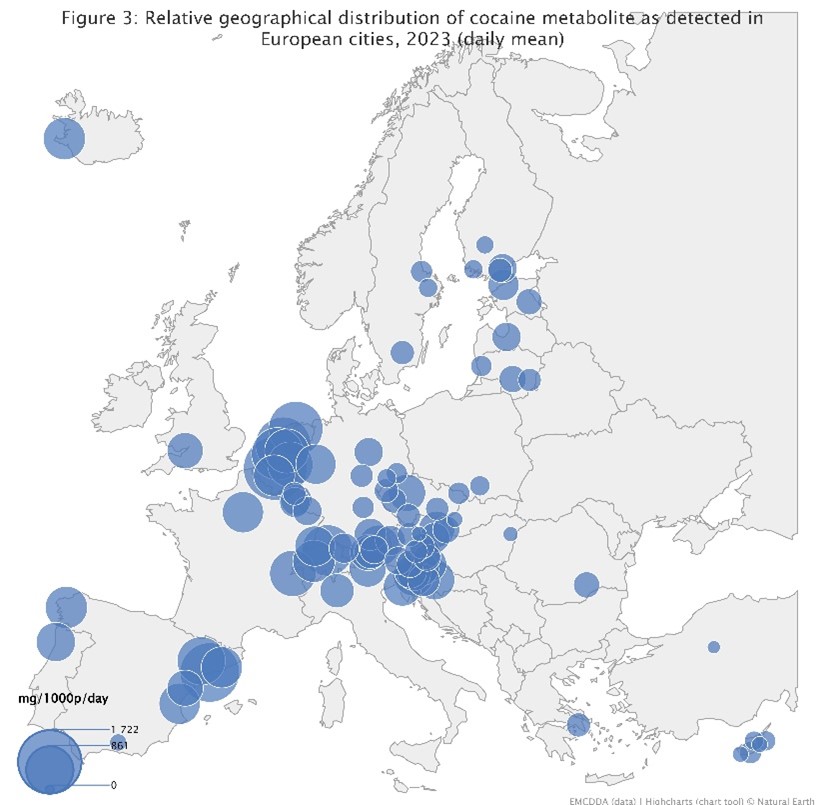Snow season: The normalisation of cocaine
DrugsMatilda Hellman, editor-in-chief for Nordic Studies on Alcohol and Drugs Published 17 Apr 2024
Use of cocaine has become more common and normalized in large parts of Europe. Wastewater analysis show that the Nordic countries are no exception to this rule. In this article Matilda Hellman raises the question of how to categorize the drug in the future.
The drug trends among young adults immersed in the party scenes of major cities in countries like the Netherlands and the United Kingdom often indicate the direction of drug use in the rest of Europe. Based on recent research in the normalization of drug use, it is predominantly the consumption of MDMA/Ecstasy, cocaine and amphetamine that has become normalized within these urban areas.

The increase in cocaine use is evident in wastewater in the Nordic region, especially in the metropolitan areas. Although the amounts of cocaine use are lower than the European average, the proportion of cocaine is still significant.

A global, complex interplay
The global cocaine market remains a global challenge, involving complex networks of production, trafficking and distribution. The South American Andean region is a major producer. A recent estimation of the magnitude and development of the global cocaine market still indicates that the effectiveness in disrupting the illicit cocaine market has improved. A key factor seems to be dealing with money laundering risks.
Cocaine is now the second most common illicit drug in Europe, and 21% of those who for the first time seek help for their drug use do so due to cocaine. In addition to the expanding markets and availability, a general normalization can be attributed to media portrayal, cultural influences and societal attitudes. Pop culture often glamorizes drug use, contributing to a perception of it as a symbol of status or excitement. Social attitudes and policies have also shown to impact the perception of drug use and influencing whether it is viewed as acceptable.
Drug use normalization processes are difficult to unfold; a recent ethnographic study from Hong Kong highlights the cultural codes and status distinctions – as well as negotiating “bag politics” – that provide access to the cocaine and the contexts in which it is available. The research shows that within social supply networks the development of “street social capital” provides opportunities for social and economic benefits both within and beyond the subculture. The desire to forge and develop such capital is entangled with the use: accessing such capital is a motiving factor to use and socially supply cocaine.
The harm of cocaine pertains to its stimulant properties, which can lead to increased heart rate, elevated blood pressure and potential cardiovascular issues. It also affects the central nervous system, leading to addiction, mental health problems and long-term damage to organs. The method of ingestion, often through snorting or injecting, poses additional health risks.
Time to reframe
In light of an impending rapid normalization of cocaine, it now appears a bit confusing that population survey protocols, such as that ESPAD school survey, lump together cocaine with “cocaine/crack” or in the category of “amphetamines, methamphetamines, cocaine and crack”. Is it time to establish that cocaine has now been normalized out of the category of hard chemical stimulants and is to be grouped, at least socioculturally speaking, beside alcohol, tobacco and cannabis?



